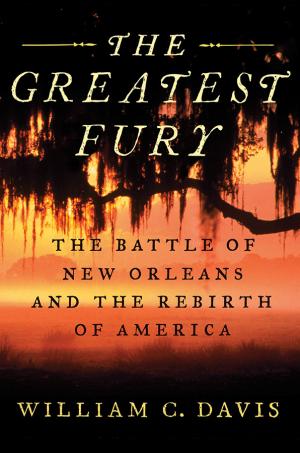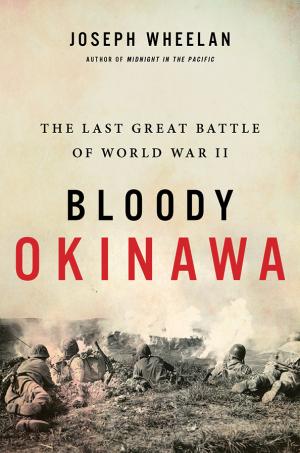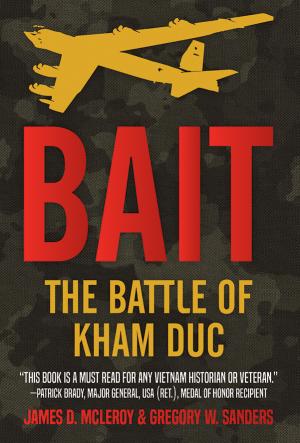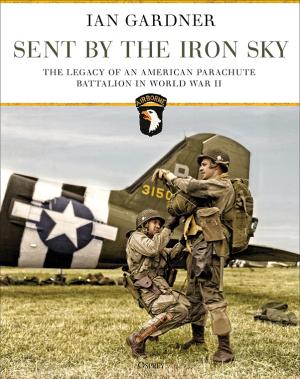April 2020 Book Reviews
April 2020 Book Reviews
Americans Proved Mettle Along Mississippi
The Greatest Fury: The Battle of New Orleans and the Rebirth of America. William Davis. Dutton Caliber. 512 pages. $32
By Samuel Watson
Initially, the bicentennial of the Battle of New Orleans—which was fought after the official end of the War of 1812—passed without much notice. Decades ago, several historians had presented effective military narratives of the British offensive and its defeat. Many believed that the battle did not matter to the outcome of the war, since the peace treaty was signed in Belgium before the fighting, and Britain ratified the treaty well before it received news of its defeat in Louisiana.
In The Greatest Fury: The Battle of New Orleans and the Rebirth of America, author William Davis argues that the battle did matter, because the British might not have returned New Orleans had they captured the city, on the probably accurate grounds that France had lacked the right to sell Louisiana to the U.S. in 1803. This is an old and necessarily hypothetical question, for which there is, and can be, no conclusive evidence either way, but Davis provides the best argument for this position.
More valuably for most audiences, Davis presents the most comprehensive account of the battle and campaign for New Orleans available, from British and American perspectives, with plentiful attention to all contexts. He uses an immense range of archival and published sources from across the U.S. and Britain.
Davis, an experienced military historian with numerous books on the Civil War to his name, has written three previous books on the Gulf Coast South during the early republic, making him aware of the context surrounding the campaign. The Greatest Fury is a concise and accurate look at Louisiana society and politics in 1814–15, as well as a deeply engaging, insightful battle and campaign study. It is remarkably researched, fast paced and full of attention to individuals.
As a military study, Davis agrees with most modern scholars that artillery, manned largely by the Regular Army, was more important than the volunteer riflemen from Kentucky and Tennessee who became legendary almost immediately after the battle. Davis’ discussion of the process of mythmaking presents an insightful exploration of media coverage of military operations, and the direct and indirect influence of politics (partisan and regional) and celebrity. The Greatest Fury also provides outstanding analysis of military and civilian morale on both sides, logistical problems that influenced morale, and civil-military relations in New Orleans.
Davis sees a diverse society coming together against an external threat and the battle giving Americans pride after a difficult war. These points have been made before, but Davis gives us the best-researched, best-written and most holistic account we are likely to see.
The campaign to attack and defend New Orleans showed the difficulties of joint operations on both sides, but primarily for the British. It also showed the decisive effect of U.S. commander Gen. Andrew Jackson’s efforts to unite and coordinate a diverse civilian population and a variety of military forces in its defense. To use another current buzz phrase, Jackson maximized talent management for the nation’s benefit.
Samuel Watson is professor of U.S. and military history at the U.S. Military Academy at West Point, New York; the author of Jackson’s Sword: The Army Officer Corps on the American Frontier, 1810–1821 and Peacekeepers and Conquerors: The Army Officer Corps on the American Frontier, 1821–1846; and a volume editor for The West Point History of Warfare.
* * *
Okinawa Offers Case Study in Joint Warfare
Bloody Okinawa: The Last Great Battle of World War II. Joseph Wheelan. Da Capo. 432 pages. $28
By Christopher Kolakowski
The Battle of Okinawa raged from April 1–June 22, 1945, as the central part of the larger Ryukyus campaign. It ranks as the largest and bloodiest amphibious operation in the Pacific Theater of World War II, and, as Winston Churchill put it, “among the most intense and famous [battles] in military history.” At the campaign’s core was land fighting involving 183,000 U.S. personnel in Lt. Gen. Simon Bolivar Buckner Jr.’s Tenth Army.
Except for the liberation of the Philippines, Okinawa represented the largest U.S. Army battle in the Central Pacific, involving a field army, a corps, and four Army infantry divisions alongside two Marine divisions and a corps headquarters. Considered by contemporaries as a dress rehearsal for the invasion of Japan proper, the fighting on and around Okinawa offered a sobering preview of what might come.
Today, the Battle of Okinawa is an important case study in joint warfare, deserving of more attention.
Joseph Wheelan, who has written several books on 19th century warfare, takes up Okinawa as the subject for his latest work. Bloody Okinawa: The Last Great Battle of World War II is his second foray into the war in the Pacific, after his 2017 study of the Guadalcanal Campaign, Midnight in the Pacific: Guadalcanal—The World War II Battle That Turned the Tide of War. The Guadalcanal book came out at the beginning of that campaign’s 75th anniversary, while Bloody Okinawa’s release is timed for just before the 75th anniversary of the U.S. landing there.
Wheelan is a diligent researcher, and a glance at his bibliography and acknowledgments demonstrates the results of his efforts. He weaves in many sources as he covers all aspects of the fighting on land, sea and air. Especially strong quotations and vignettes help sharpen his narrative.
However, Bloody Okinawa suffers from limitations. It calls the USS Indianapolis a battleship, when it was a heavy cruiser, and incorrectly calls Okinawa the most populous island invaded by the Allies in the Pacific (that was Luzon in the Philippines). These and other errors can be a distraction.
The narrative can be difficult to follow, frequently jumping back and forth across the battlefield and in time.
Those readers who have some knowledge of the Battle of Okinawa will appreciate Wheelan’s research and find new details to enhance their understanding.
Christopher Kolakowski, former director of the General Douglas MacArthur Memorial in Norfolk, Virginia, works as a historian in Madison, Wisconsin. He is the author of books on the American Civil War and World War II in the Asiatic-Pacific Theater, including Last Stand on Bataan: The Defense of the Philippines, December 1941–May 1942.
* * *
Recalling Little-Known Battle
Bait: The Battle of Kham Duc. James McLeroy and Gregory Sanders. Casemate Publishers (An AUSA Title). 272 pages. $34.95
By Command Sgt. Maj. Jimmie Spencer, U.S. Army retired
Kham Duc is located in a small valley in Vietnam’s Central Highlands. In May 1968, it was a remote and isolated American Special Forces camp arrayed along the Laotian border. Fifteen miles east of the border with Laos, the camp was considered well positioned to monitor and interdict North Vietnam’s main supply network: the Ho Chi Minh Trail. An old airstrip, in much need of repair, was the only means of access, and during the monsoon season, rain and fog meant zero visibility for pilots. Weather conditions factored heavily in the Battle of Kham Duc.
Bait: The Battle of Kham Duc is co-authored by two former Army officers and Vietnam War veterans, James McLeroy and Gregory Sanders, who provide a firsthand, exhaustively documented account of the large but little-known battle that occurred at the height of the Vietnam War.
In the early hours of May 10, 1968, elements of the North Vietnamese Army’s 2nd Division, reinforced by local Viet Cong forces, moved into position and made final preparations for the attack on Kham Duc and the nearby outpost of Ngok Tavak. Located about 5 miles south of Kham Duc, Ngok Tavak was defended by a company of South Vietnamese led by a handful of Australians and Americans, plus 40 Marine artillerymen. None of the Marines were trained in infantry combat tactics. Both sites were surrounded, outnumbered and outgunned.
Both camps received predawn indirect fire, and Ngok Tavak was attacked by enemy ground forces. After intense fighting throughout the morning of May 10, the small outpost was in desperate need of resupply and reinforcements. Forced to evacuate the firebase or face being overrun, the survivors moved through the jungle with the North Vietnamese forces in pursuit, then were picked up by helicopters and flown to Kham Duc.
The 23rd Infantry “Americal” Division was responsible for the defense of the Special Forces camps south of Da Nang. The division spent the better part of May 10 and 11 reinforcing Kham Duc in anticipation of an all-out ground attack by overwhelming North Vietnamese forces. Meanwhile, at Military Assistance Command, Vietnam, headquarters in Saigon, the decision was made to abandon the camp. Kham Duc was not important enough to justify the cost of defending it, and allied leadership was not about to allow North Vietnam to label this small outpost as America’s Dien Bien Phu, where French troops were overrun by Viet Minh forces in 1954.
The events of May 12—Mother’s Day back in America—are best described as a series of confusing, disjointed episodes. The enemy launched ground attacks, and the defenders responded with massive firepower. Uncommon acts of valor were common that day among the men in the trenches and the aircrews above. It was also a day of leadership failures.
Bait is a vivid, authentic study of the historic Battle of Kham Duc. The authors present a strong case that, contrary to other accounts, it was an American tactical victory. Well written and thoroughly researched, Bait reads like a novel and is an important contribution to our understanding of this major battle during America’s most misunderstood war. It is a compelling account of true life-and-death events for anyone interested in military history and a fresh in-depth analysis of the battle for historians. Bait should be mandatory reading for military leaders at every level.
Command Sgt. Maj. Jimmie Spencer, U.S. Army retired, held assignments with infantry, Special Forces and Ranger units during his 32 years of active military service. He is the former director of the Association of the U.S. Army’s NCO and Soldier Programs and is an AUSA senior fellow.
* * *
Giving Unheralded Airborne Unit Its Due
Sent by the Iron Sky: The Legacy of an American Parachute Battalion in World War II. Ian Gardner. Osprey Publishing. 260 pages. $30
By Col. Steve Patarcity, U.S. Army Reserve retired
The story of the contribution of airborne troops in World War II has been told and documented in numerous works over the past 75-plus years. Despite extensive writings on American parachute formations, it seems there are always so many more diverse and fascinating stories that have yet to be told. In Sent by the Iron Sky: The Legacy of an American Parachute Battalion in World War II, author Ian Gardner describes with clarity the chronicle of the soldiers of the 3rd Battalion, 506th Parachute Infantry Regiment, 101st Airborne Division.
Gardner has previously published three books on the battalion, and thus is intimately familiar with this particular unit and the men who served in it. Although not as well known as their fellow soldiers of Company E of the 506th’s 2nd Battalion, they of Band of Brothers fame, readers will find the tale of this unit to be equally engrossing. Gardner’s narrative is well written and researched, and ably supported by photographs of the unit from initial training in the U.S. to the close of the war and after. Personal interviews enhance the story and demonstrate the author’s meticulous attention to detail.
Gardner’s military service contributes to his authorship. He served as a medic in the Support Company/10th Battalion of the Parachute Regiment in the U.K.’s Territorial Army (now the U.K. Army Reserve). This stimulated his interest in American airborne soldiers of World War II, and he decided to focus on the 3rd Battalion, 506th Parachute Infantry Regiment. Gardner visited Normandy, France, and other sites.
In Sent by the Iron Sky, contemporary photographs give the reader a modern-day perspective, and maps and drawings orient one to the historical event. The detailed nature of Gardner’s research can be seen in his recounting of the exact locations of individual soldiers during battle as well as the location of remains.
Part of the legacy of the 3rd Battalion, 506th Parachute Infantry Regiment, is its reverence for its battalion commander, Lt. Col. Robert Lee Wolverton. Deeply respected by his men, Wolverton led the battalion on June 6 during the drop into Normandy, only to be killed almost immediately after exiting the plane when he became entangled in his harness in a tree landing and was shot by German defenders. Wolverton’s remains were eventually reinterred at the U.S. Military Academy at West Point, New York.
Though Wolverton perished, his legacy was maintained by the soldiers of the unit, who made sure his widow, Kay, was always part of the unit family. Additionally, Gardner asked Wolverton’s grandson to write the introduction to the book. However, the story of Wolverton is not the sole focus of Gardner’s book. It is just one tale of one of the many soldiers of the battalion and their wartime service.
Sent by the Iron Sky is an engrossing story of men at war and, particularly, of an airborne unit heretofore not well known, except, perhaps, by those with a personal connection. Gardner has done a noteworthy job in telling the tale of a fine battalion and its soldiers—true representatives of the “the greatest generation.”
Col. Steve Patarcity, U.S. Army Reserve retired, is a civilian strategic planner on the staff of the Office of the Chief of Army Reserve at the Pentagon. He retired in 2010 after 33 years of service in the Regular Army and the Army Reserve, which included military police and armor assignments in the U.S., Kuwait and Iraq





